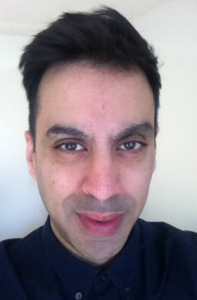 It is clear from the press, social media, and research evidence that patients and their relatives will not wait to raise concerns if their expectations of the care provided to them are not met. And rightly so. When I returned to working in the NHS from abroad, the first observation I made is the concern that families often have about being provided an update about their relative’s care. From their perspective they observe numerous doctors and nurses within a ward or A&E setting and find it perplexing how long it takes to liaise with a healthcare professional. Of course from the healthcare professionals’ side, we know why this may occur. Multiple admissions, multiple levels of illness severity, increasing complexity, and multiple tasks per admission all add to the increasing workload that healthcare professionals have to manage. This issue of updating relatives with information was also recently highlighted by David Oliver in one of his columns, who noted that “doing this well is difficult.”
It is clear from the press, social media, and research evidence that patients and their relatives will not wait to raise concerns if their expectations of the care provided to them are not met. And rightly so. When I returned to working in the NHS from abroad, the first observation I made is the concern that families often have about being provided an update about their relative’s care. From their perspective they observe numerous doctors and nurses within a ward or A&E setting and find it perplexing how long it takes to liaise with a healthcare professional. Of course from the healthcare professionals’ side, we know why this may occur. Multiple admissions, multiple levels of illness severity, increasing complexity, and multiple tasks per admission all add to the increasing workload that healthcare professionals have to manage. This issue of updating relatives with information was also recently highlighted by David Oliver in one of his columns, who noted that “doing this well is difficult.”
So how can we take steps to put relatives’ minds at ease? During my sabbaticals in East Asia, the US, and Europe, I noted one similarity—there is no shortage of shopping malls. While I am not a real fan of malls, one aspect struck me as advantageous. Each mall had a computerised screen detailing each shop available and the type of service available. The A-Z user friendly platform made it easier to search for my usual stores particularly when tasked with some of the more confusing, architectural shopping complexes.
Could such systems be adopted in healthcare? A simple A-Z touch screen display detailing the common conditions we treat, in internal medicine or surgery, what the symptoms and signs usually are, and what we choose as investigations or management and why. In the time it takes for relatives to then gain an update face to face at least broad, evidence based details of the condition have been made available with minimal disruption to patient confidentiality and potentially a reduction in anxiety. If, for example, their family member is admitted with an exacerbation of COPD, the computerised display could provide information on what a typical chest X ray of COPD is likely to look like, why we do an arterial blood gas, and why we give nebulisers or potentially start NIV. If their family member is admitted with a GI bleed, the computerised system could provide details of why we do an endoscopy and what the potential treatments are based on what is found. The system would also allow for information to be updated in real time as the evidence changes, a step in the right direction when compared to the current simplicity of information leaflets.
If this suggestions appears bold, then it is worth remembering that innovation relies on recognising a problem exists and being brave enough to generate solutions. And the reason behind the success of many innovative enterprises is that often their solutions are not focused inwards. Instead they look outwards. This helps to lessen the risk of adopting solutions comprised of a top down approach and “expert” bias, which can fail to look at broader ideas. For healthcare systems to function effectively in the future, an outward looking approach is needed. Can we learn from other sectors and adopt and adapt accordingly? On the basis of the significant problems we face I think it is time we do so.
Neel Sharma is an academic clinical lecturer in Gastroenterology and Medical Educator, Queen Elizabeth Hospital, Birmingham, UK
Competing interests: None declared
